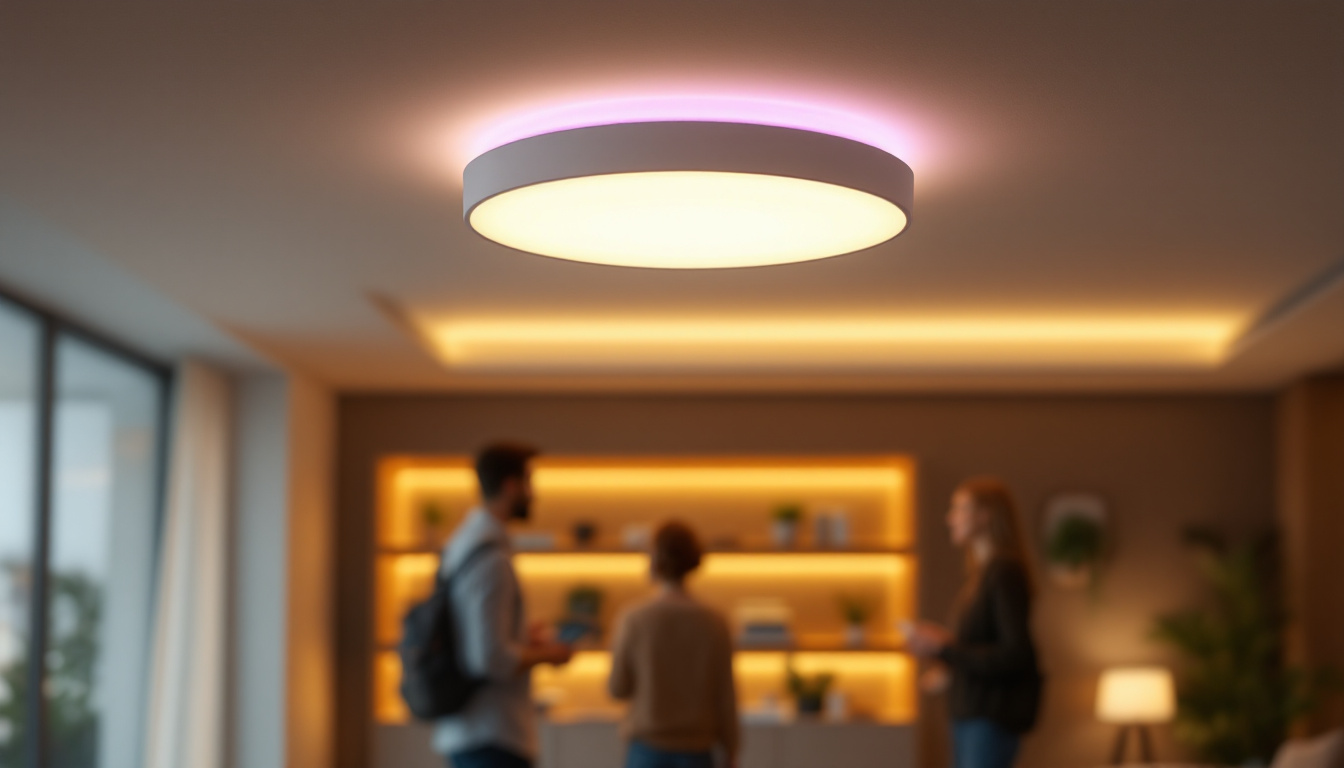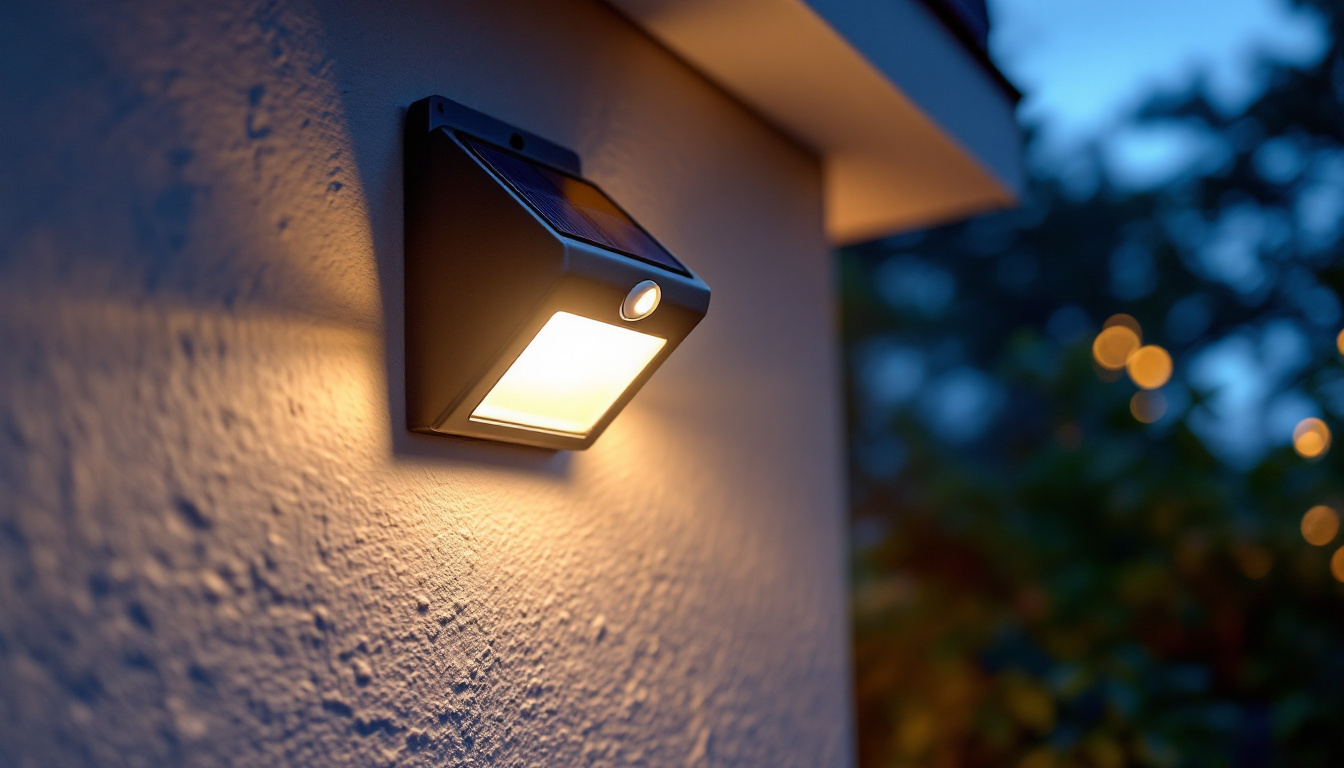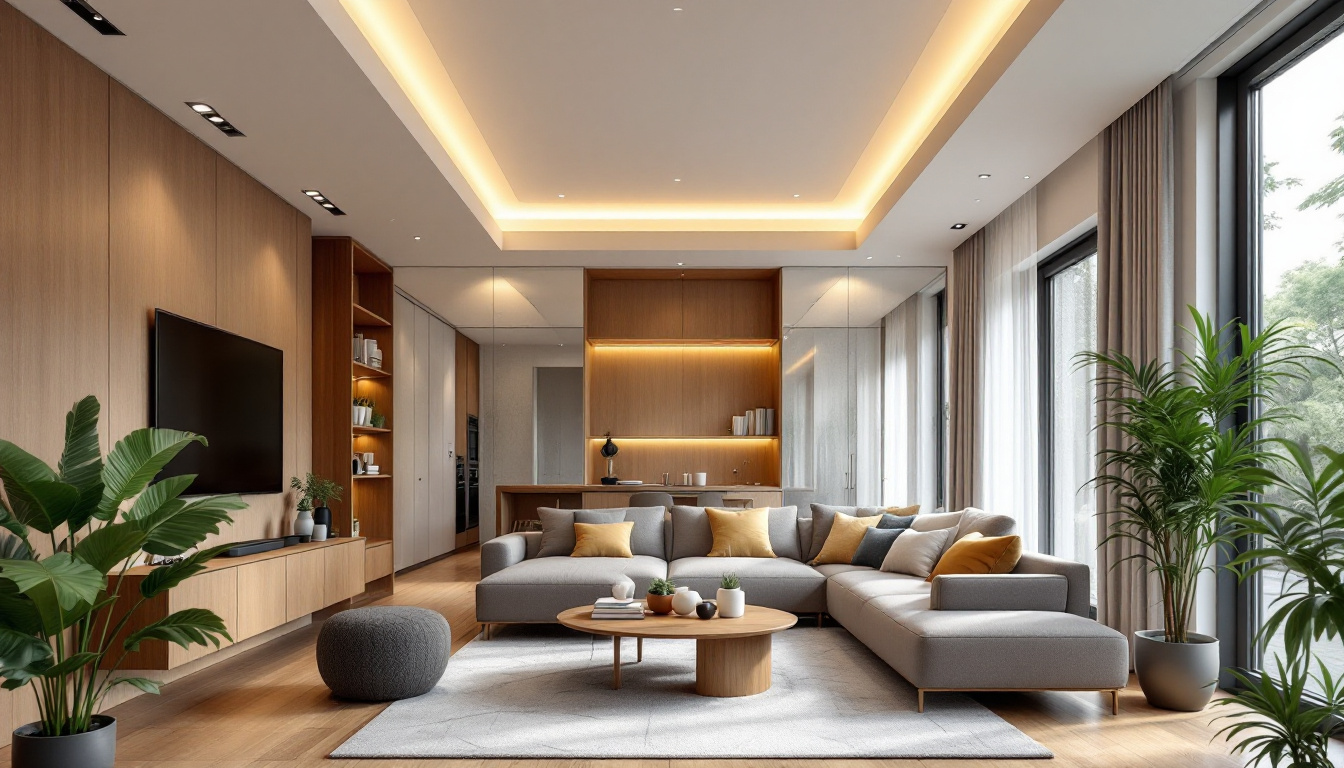

In the realm of modern lighting solutions, motion detector ceiling lights have emerged as a transformative technology. These innovative fixtures not only enhance security but also contribute to energy efficiency and convenience. For lighting contractors, understanding how to leverage motion detector ceiling lights can lead to improved project outcomes and satisfied clients. This article explores the benefits, installation considerations, and best practices for integrating motion detector ceiling lights into various environments.
Motion detector ceiling lights are designed to automatically turn on when they detect movement within a specified range. This functionality is particularly useful in areas where hands-free operation is desirable, such as hallways, garages, and outdoor spaces. By utilizing infrared sensors or microwave technology, these lights can effectively monitor their surroundings and respond accordingly. The convenience of motion detector lights not only enhances user experience but also adds a layer of security to homes and businesses alike, making them a popular choice for modern lighting solutions.
There are primarily two types of motion sensors used in ceiling lights: passive infrared (PIR) sensors and microwave sensors. PIR sensors detect changes in infrared radiation, which is emitted by warm bodies, while microwave sensors emit microwave pulses and measure the reflection off moving objects. The choice between these two types often depends on the specific application and the environment in which they will be installed.
Each type has its advantages and disadvantages. For instance, PIR sensors are generally more energy-efficient and less expensive, making them suitable for residential applications. In contrast, microwave sensors can cover larger areas and are ideal for commercial settings where extensive coverage is required. Additionally, microwave sensors are less prone to false triggers from small animals, making them more reliable in outdoor settings. Understanding these nuances can help consumers make informed decisions based on their specific lighting needs.
The integration of motion detector ceiling lights offers numerous benefits. Firstly, they enhance safety by illuminating dark areas when movement is detected, reducing the risk of accidents. This is particularly important in commercial spaces, where well-lit environments can deter criminal activity. Moreover, the presence of motion-activated lighting can provide peace of mind for homeowners, knowing that their property is better protected against intruders.
Secondly, these lights contribute to energy savings. By ensuring that lights are only on when needed, they can significantly reduce electricity consumption. This is an appealing feature for clients looking to lower their utility bills and minimize their environmental footprint. Furthermore, many modern motion detector lights come equipped with adjustable settings, allowing users to customize the sensitivity and duration of illumination. This flexibility not only enhances convenience but also optimizes energy efficiency, making these lights a smart investment for both residential and commercial applications.
Motion detector ceiling lights can be effectively utilized in a variety of settings, from residential homes to commercial buildings. Understanding the specific needs of each environment is crucial for successful implementation.
In residential settings, motion detector ceiling lights are commonly used in entryways, garages, and outdoor patios. Homeowners appreciate the convenience of lights that turn on automatically as they approach their homes, providing safety and ease of access.
Additionally, integrating these lights in hallways and staircases can prevent falls and accidents, particularly for elderly residents. The ability to customize sensitivity and duration settings allows homeowners to tailor the lighting experience to their specific needs. For instance, families with young children can adjust the sensitivity to ensure that the lights activate with even the slightest movement, providing peace of mind during nighttime hours. Furthermore, the aesthetic appeal of modern motion detector lights, available in various designs and finishes, allows homeowners to enhance their decor while enjoying the practical benefits of automated lighting.
In commercial environments, motion detector ceiling lights can enhance both safety and efficiency. Retail spaces benefit from strategically placed lights that activate when customers enter, creating a welcoming atmosphere while conserving energy during off-peak hours.
Moreover, in office buildings, these lights can be programmed to turn on in response to employee movement, ensuring that workspaces remain illuminated without unnecessary waste. This is particularly useful in areas such as conference rooms and break rooms, where occupancy may vary throughout the day. Additionally, implementing motion detector lights in warehouses and storage facilities can significantly improve visibility and safety for workers, reducing the risk of accidents in high-traffic areas. The integration of these systems with smart technology can also allow for remote monitoring and control, providing managers with the ability to adjust settings based on real-time occupancy data, further optimizing energy usage and enhancing security measures.
When installing motion detector ceiling lights, several factors must be considered to ensure optimal performance and user satisfaction. Proper placement, sensor sensitivity, and power supply are all critical elements that can influence the effectiveness of the lighting solution.
The placement of motion detector ceiling lights is paramount. Ideally, they should be installed in locations that maximize their coverage area while minimizing obstructions. For instance, placing lights in corners can enhance their field of view, allowing them to detect movement from multiple angles.
Additionally, understanding the specific needs of each space is essential. For example, in a long hallway, multiple lights may be necessary to ensure adequate coverage, while a small entryway may only require a single fixture.
Most motion detector ceiling lights come with adjustable sensitivity settings. This feature allows contractors to configure the lights based on the expected level of foot traffic. In high-traffic areas, higher sensitivity may be beneficial, while in less frequented spaces, a lower setting can prevent unnecessary activation.
Timing settings are equally important. Contractors should educate clients on the duration for which the lights remain on after detecting motion. This can usually be adjusted based on user preference, ensuring that lights do not turn off too quickly, which could lead to inconvenience.
Integrating motion detector ceiling lights into existing lighting systems requires careful planning and execution. Following best practices can enhance the overall effectiveness and user experience.
To achieve a well-rounded lighting design, motion detector ceiling lights can be combined with other types of fixtures. For instance, ambient lighting can be complemented with task lighting in workspaces, ensuring that areas are well-lit for various activities.
Additionally, incorporating dimmable options can further enhance the versatility of the lighting system. This allows users to adjust the brightness according to their needs, creating a more comfortable environment.
Education is a key component in the successful implementation of motion detector ceiling lights. Lighting contractors should take the time to explain the features and benefits to clients, ensuring they understand how to use and maintain the systems effectively.
Providing guidance on optimal settings and usage can lead to increased satisfaction and fewer service calls. Clients who feel confident in their lighting systems are more likely to appreciate the value of the investment.
While motion detector ceiling lights offer numerous advantages, there are also challenges that lighting contractors may encounter during installation and use. Identifying these challenges and providing solutions is essential for ensuring client satisfaction.
One common issue with motion detector lights is false activations, which can occur due to pets, moving branches, or other environmental factors. This can lead to frustration for users and may diminish the perceived value of the lighting solution.
To mitigate this, contractors should recommend models with adjustable sensitivity settings and provide guidance on optimal placement. Educating clients on potential triggers can also help them understand how to minimize false activations.
Another challenge is the limited range of some motion sensors. Depending on the model, the detection range may not cover larger areas effectively. In such cases, contractors can suggest installing additional fixtures to ensure comprehensive coverage.
It is also important to select the right type of sensor for the specific application. For example, a microwave sensor may be more suitable for larger commercial spaces, while PIR sensors may suffice for smaller residential areas.
The landscape of motion detector lighting is continuously evolving, with advancements in technology paving the way for more efficient and user-friendly solutions. Staying abreast of these trends can help lighting contractors remain competitive in the market.
As smart home technology becomes increasingly prevalent, motion detector ceiling lights are being integrated into broader home automation systems. This allows users to control their lighting remotely, set schedules, and even receive notifications when motion is detected.
Contractors should familiarize themselves with smart home platforms and recommend compatible products to clients. This not only enhances the functionality of the lighting system but also appeals to tech-savvy homeowners looking for modern solutions.
Energy efficiency remains a top priority for many consumers, and advancements in LED technology are contributing to the development of more sustainable motion detector lighting solutions. LEDs consume significantly less energy than traditional bulbs, making them an attractive option for both residential and commercial applications.
Contractors should emphasize the long-term savings associated with LED motion detector lights, as well as their reduced environmental impact. This can be a compelling selling point for clients looking to invest in energy-efficient solutions.
Motion detector ceiling lights represent a significant advancement in lighting technology, offering both convenience and energy efficiency. For lighting contractors, understanding the various applications, installation considerations, and best practices can lead to successful project outcomes and satisfied clients.
By leveraging the benefits of motion detector lighting and staying informed about future trends, contractors can position themselves as leaders in the industry, providing innovative solutions that meet the evolving needs of their customers. As the demand for smart and efficient lighting solutions continues to grow, embracing motion detector ceiling lights will undoubtedly be a key component of successful lighting design.
Ready to elevate your lighting solutions with the cutting-edge convenience and energy efficiency of motion detector ceiling lights? At LumenWholesale, we provide lighting contractors with the highest quality, spec-grade lighting products at prices that can’t be beaten. Say goodbye to unnecessary markups and hello to a vast selection of reliable lighting options that meet rigorous industry standards. Plus, with free shipping on bulk orders, you can stock up on premium lighting without worrying about hidden fees. Don’t compromise on quality or value—choose LumenWholesale for your lighting needs and make your next project shine. Discover our unbeatable wholesale lighting deals at the best value by visiting LumenWholesale today.

Discover essential insights into outdoor post top lights with our comprehensive guide tailored for lighting contractors.

Discover the benefits and features of solar-powered motion detection lights in this comprehensive guide.

Discover how LED outdoor wall lights are revolutionizing the lighting industry by boosting efficiency for contractors.

Discover how 6-inch LED recessed lighting can transform your business strategy and help you secure more lighting contracts.
Get notified when NEW deals are released.
Optimize your budget with wholesale discounts.
Only top-quality, specification-grade lighting products.
No additional costs at checkout - what you see is what you pay.
We understand the unique needs of contractors.